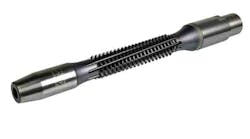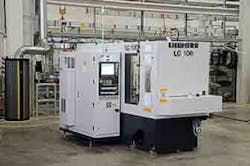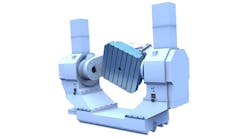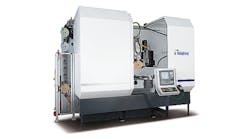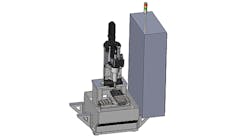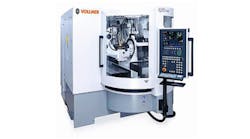While much of the focus for new CNC machine design has been on large-dimension parts (think of wind turbine housings, drilling rig components, or aircraft and industrial engines), a new machine introduced by Liebherr last month emphasizes speed and reliability for the opposite end of the size chart. The Liebherr LC 100, introduced at AMB 2014 in September, is designed to machine small parts in mass production, including standard part for automatic gearbox applications, such as planetary and sun gears.
At AMB, Liebherr-Verzahntechnik GmbH exhibited the Liebherr LC 100 in partnership with Gebr. Saacke GmbH, a precision toolmaker, producing worm wheels in cycles as short as eight seconds.
“With a rapid machine loading and unloading capability, the Liebherr LC 100 can achieve chip-to-chip times of three seconds – impressive for a machine with only one work table—and still meet gear quality requirements,“ explained Dr.-Ing. Oliver Winkel, who leads the Application Technology program at Liebherr-Verzahntechnik GmbH.
The fast swivel loader ensures short chip-to-chip times, and therefore high productivity. Set-up flexibility is improved by the system’s exchangeable quick-change gripper inserts that require no tools.
At its plant in Pforzheim, Germany, Saacke will use the LC 100 to machine carbide worm wheel hobbing cutters that provide significantly higher hobbing speeds, minimizing machining times.
Furthermore, the machine developer indicated the increased rigidity and cutting-edge reliability of the Saacke carbide tools deliver a higher level of surface quality than conventional HSS tools, and the hardness and the edge strength of the carbide tools promote longer tool life.
“The great results achieved are based on joint development and testing work performed by both Liebherr and Saacke,” Winkel explained. “Our close worm-wheel hobbing machine partnership is based on each company’s core skills and enables users to manufacture worm gearing with good roll performance characteristics and optimal power transmission in the shortest possible time.”
The basis for this production capability is the Liebherr machines’ high degree of reliability and tools with precision profile geometries.
In regard to machine performance, the developer made a further important point: because tools with a diameter of as little as 20 to 30 mm are comparatively thin in relation to length, conventional tools tend to vibrate. Given its high modulus of elasticity, carbide is far less prone to vibrate and rattle. Thus, hobbing speeds can be increased significantly. At tool diameters of between 20 and 30 mm, and cutting speeds of more than 250 m per minute, hobbing speeds of more than 3,000 to 4,000 rpm can be achieved.
“Not many machines are capable of that speed range,” according to Liebherr’s Winkel. “Users can exploit the LC 100’s technological potential using carbide tools. The machine enables us to achieve cycle times of approximately 5 seconds—just 20% of the time such a process usually takes.”
